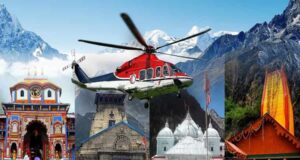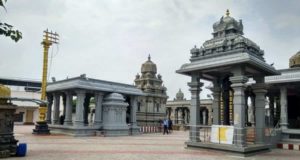About Kumaoni Culture, Uttarakhand

Kumaon, the counterpart of Garhwal on the west side of Uttarakhand, is a region of endless charms and breathtaking beauty. Kumaon, like Garhwal, is full of mountainous ranges and endless mountain peaks. The Kumaoni culture is immersed in folklore and tales of innumerable gods and goddesses. There isn’t a river or a mountain that isn’t associated with one folktale or another. The people living in this region are called Kumaoni and so is the language of Kumaon.
Geography
The Kumaon region, unlike the Garhwal region, has diversity where landscapes are concerned. The Kumaon region is filled with mountain peaks, meadows, two large submontanes Terai and Bhabhar (located at the base of mountains) and valleys through which beautiful rivers flow. The important rivers passing through this land include Sharda (Kali), the Pindari, and Kailganga, which join the Alaknanda. Kumaon region also holds importance for being the place from where the great journey of Kailash Mansarovar begins.
People
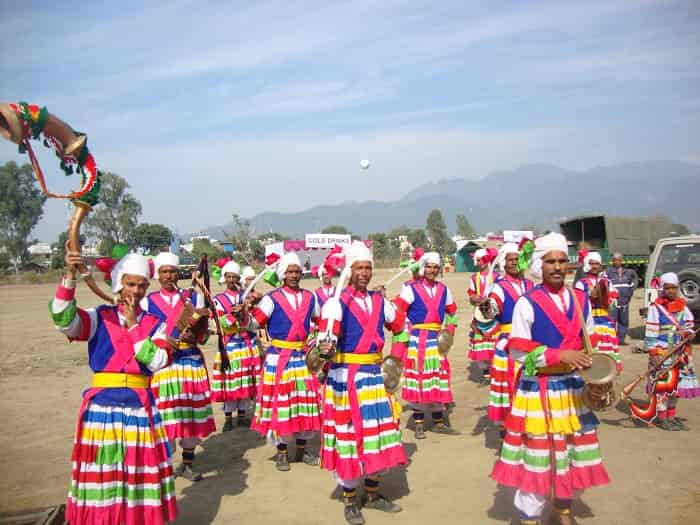
The inhabitants of Kumaon are called Kumaonis and the language is spoken by them is called Kumaoni too. The Kumaoni society is a patriarchal society with the eldest male in the family as the head. The womenfolk, however, hold importance in the society as they are an integral part of the workforce, working in fields as well as doing household work.
Language
The language spoken by the Kumaoni people is called Kumaoni. Kumaoni is one of the 325 recognized languages of India and is spoken by around 3 million people in India in the states of Uttarakhand, Assam; Bihar; Delhi; Madhya Pradesh; Maharashtra, and Punjab as well as in some regions of Himachal Pradesh and Nepal.
Kumaoni forms one of the subgroups of the Pahari Languages. The other languages in this subgroup include Garhwali, spoken in the Garhwal region of Uttarakhand, and Himachali, spoken in Himachal Pradesh.
The Kumaoni language has around 20 dialects including Danpuriya, Gangola, Johari, Khasparjia, Soryali, Majh Kumaiya, Askoti, Chaugarkhyali, Phaldakoti, Sirali, Kumaiya, Rauchaubhaisi & Pachhai.
However, the area and people speaking Kumaoni are shrinking rapidly and the language finds its place in the UNESCO’s Atlas of the World’s Languages in Danger.
Gods and Goddesses
The region of Kumaon is full of folklores about gods and goddesses, including the local gods and war heroes who have taken the form of gods to the people now. Almost every place in Kumaon is connected with a god or goddess and a marvelous story around it.

The popular gods in Kumaon include Airy, whose eyes are on its head and who takes care of the animals of the villagers Haru, the King of Champawat, who was worshipped as a god after his death and Gwalla or Golu Devata, the god of justice, to whom everyone takes his problem.
The goddesses include Naina Devi; the Kumaoni goddess, probably the most famous deity of this region. It is believed that as the Indo-Greeks migrated to this place, they brought their own religion with them. The goddess ‘Nana’ is supposed to be the deity from which goddess Nanda Devi originated. The other famous goddess of this region is Naina Devi, a name for the goddess Parvati. It is believed that queen Jayatri, the Katyuri queen built the temple of goddess Naina Devi.
Other famous gods in this region include Bholanath, Gangnath, Chaumu (protector of animals), Nagnath, Narsingh, etc. The goddesses include Anyari and Ujjyali.
Apart from these gods, there is Garh Devi who is supposed to live on the cremation grounds and is worshipped on Amavasya (no moon) night.
Architecture and Sculpture
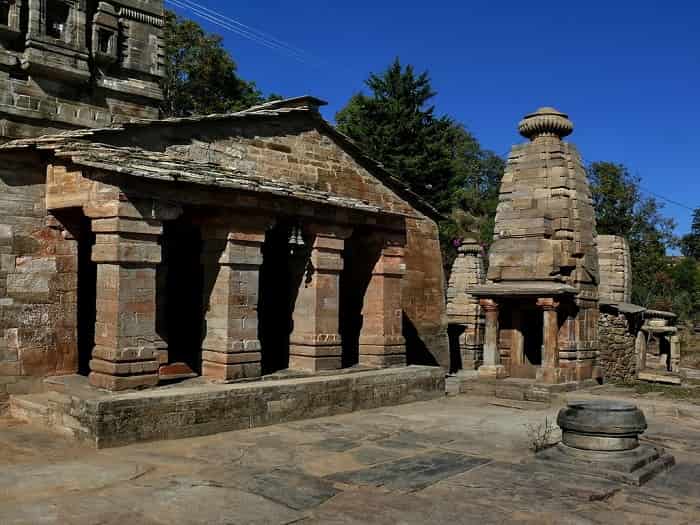
Kumaon region is quite famous for its architectural style as well as the sculptural beauty of its temples. The architectural style of the region is seen in the beautiful houses built with gray stone and wood with many doors and little windows.
The sculptural beauty is nowhere better than in the temples of Jageshwar, Dwarahat, Baijnath, Katarmal, Kasni, and Champawat. The bronze idols as well as intricate carvings of the temples demonstrate the ability of the Kumaoni sculptors who made them.
Fairs and Festivals
Kumaoni people, by nature, are very fond of festivities and frolic, hardly missing a chance to celebrate something together. For this reason, the calendar of Kumaon is filled with festivals and fares. Some of the important celebrations are as follows:
Uttarayani Mela
A very popular and famous fair of Kumaon, the dola of Chaumu is brought down from the temple today. The fair is held in many places simultaneously including, Bageshwar, Rameshwar, Pancheshwar, etc.
Nanda Devi Mela
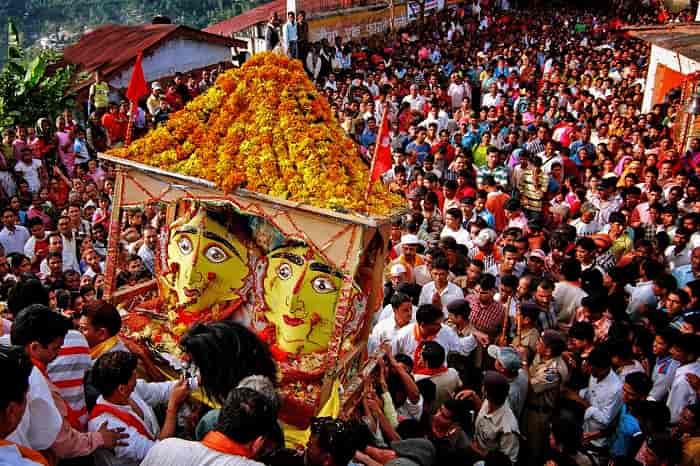
The Nanda Devi Mela (fair) is one of the most important fairs in Kumaon. Celebrated at various places like Nainital, Ranikhet, Munsyari etc. The procession of Almora, however, is the most popular one in which thousands of devotees take part, taking the Dola of goddess Nanda Devi.
Fairs at Jageshwar:
Jageshwar is counted among the twelve Jyotirlingas of the country and has 12 temples belonging to lord Shiva. The fairs at Jageshwar are held twice a year, one in February and the other around August. People from near and far come to attend these fairs in large numbers.
Bhitauli
Bhitauli is a festival named after the gifts that brothers send to their sisters, which are called Bhitauli. The festival starts on the first day of Navratri (festival of nine nights) as the women sow seven kinds of grains in the ground. As the festival draws to an end, the leaves germinated from the seeds are taken and put into one’s house or hair, etc. This plantation is the symbol of a healthy future harvest.
There are many other festivals and fairs held in Kumaon like the Vasant Panchami (the onset of spring), Lakshmi Pooja (worshipping the goddess of wealth), Ganga Dussehra, Olgi, Samvatsar Padyaoo, etc.

